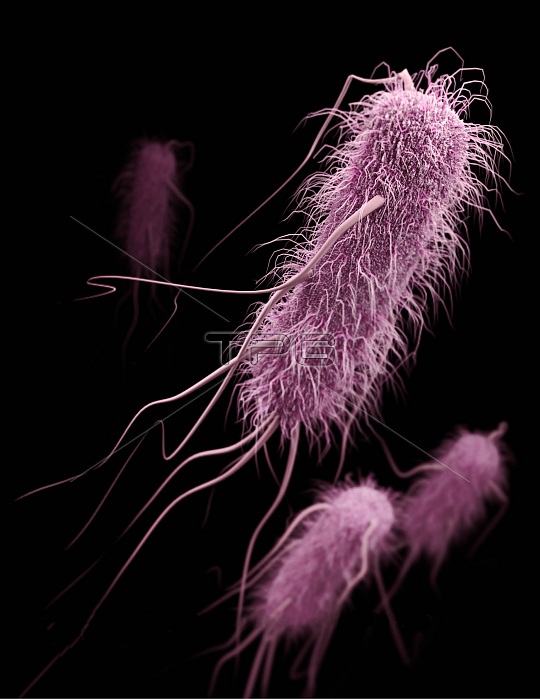
Three-dimensional (3D) computer-generated image of a group of extended-spectrum Beta-lactamase-producing Enterobacteriaceae (ESBLs) bacteria. The artistic recreation was based upon scanning electron micrographic imagery. This is an excellent visual example of the long, whip-like peritrichous flagellae sprouting from what appear to be random points on the organism's exterior, as well as the numerous shorter, and finer fimbriae, imparting a furry look to the bacteria. Extended-spectrum Beta-lactamases is an enzyme that allows bacteria to become resistant to a wide variety of penicillins and cephalosporins. Bacteria that contain this enzyme are known as ESBLs or ESBL-producing bacteria. ESBL-producing Enterobacteriaceae are resistant to strong antibiotics including extended spectrum cephalosporins. An estimated 140,000 healthcare-associated Enterobacteriaceae infections occur in the United States each year. CDC estimates that bloodstream infections caused by ESBL-containing Enterobacteriaceae result in upwards of $40,000 in excess hospital charges per occurrence. Approximately 26,000 infections and 1,700 deaths are attributable to ESBLs.
| px | px | dpi | = | cm | x | cm | = | MB |
Details
Creative#:
TOP22304273
Source:
達志影像
Authorization Type:
RM
Release Information:
須由TPG 完整授權
Model Release:
N/A
Property Release:
No
Right to Privacy:
No
Same folder images:

 Loading
Loading